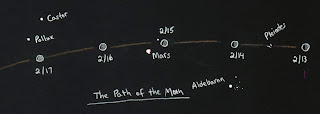See the Moon and Planets!Join us to discover the wonders in the sky! See the craters on the Moon, the clouds of brilliant Venus, and the moons of mighty Jupiter.
Members of the Roanoke Valley Astronomical Society will provide telescopes for you to look at these amazing sights.
Everyone of all ages is invited to this FREE event!
Monday October 6, 7:00 p.m to 8:00 p.m. on the lawn of the Williamson Road Public Library. If it's cloudy or raining, the event will be October 8.
******************************
¡Vean la Luna y los Planetas! Juntémosnos para descubrir las maravillas del cielo! Observemos los cráteres de la Luna, el brillante planeta Venus y las lunas del imponente Júpiter. Miembros de la RVAS (Sociedad Astronómica del Valle de Roanoke) tendrán sus telescopios.
¡Todos están invitados al evento gratuito! Lunes, el 6 de octubre, a las 19h00 hasta las 20h00 en el césped de la biblioteca Williamson Road Public Library. Si está nublado o llueve, el evento será miércoles, el 8 de octubre.
***************************************
Quan sát Mặt Trăng và các Hành Tinh!Xin mời cùng chúng tôi khám phá những kỳ quan trên
không gian! Xem những hố trũng trên Mặt Trăng, những
vầng mây của hành tinh Vệ Nữ sáng chói, và các mặt trăng
của Mộc Tinh vĩ đại.
Những hội viên của Roanoke Valley Astronomical Society
sẽ cung cấp viễn vọng kính để các bạn xem các quang cảnh
gây sửng sốt này.
Xin mời các bạn không giới hạn tuổi tác đến tham dự buổ i
quan sát MIỄN PHÍ này!



































